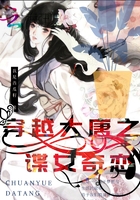Star-shaped.heart-shaped, spear-shaped, arrow-shaped, fretted, fringed, cleft, furrowed, serrated, in whorls, in tufts, in wreaths, in spires, endlessly expressive, deceptive, fantastic, never the same from footstalks to blossom, they seem perpetually to tempt our watchfulness, and take delight in outstripping our wonder." Doubtless light is the factor with the greatest effect in determining the position of the leaves on the stem, if not their shape.After plenty of light has been secured, any aid they may render the flowers in increasing their attractiveness is gladly rendered.Who shall deny that the brilliant foliage of the sumacs, the dogwood, and the pokeweed in autumn does not greatly help them in attracting the attention of migrating birds to their fruit, whose seeds they wish distributed? Or that the clustered leaves of the dwarf cornel and Culver's-root, among others, do not set off to great advantage their white flowers which, when seen by an insect flying overhead, are made doubly conspicuous by the leafy background formed by the whorl?
BUTTONBUSH; HONEY-BALLS; GLOBE-FLOWER; BUTTON-BALL SHRUB;RIVER-BUSH
(Cephalanthus occidentalis) Madder family Flowers - Fragrant, white, small, tubular, hairy within, 4-parted, the long, yellow-tipped style far protruding; the florets clustered on a fleshy receptacle, in round heads (about 1in.across), elevated on long peduncles from leaf-axils or ends of branches.Stem: A shrub 3 to 12 ft.high.Leaves: Opposite or in small whorls, petioled, oval, tapering at the tip, entire.
Preferred Habitat - Beside streams and ponds; swamps, low ground.
Flowering Season - June-September.
Distribution - New Brunswick to Florida and Cuba, westward to Arizona and California.
Delicious fragrance, faintly suggesting jasmine, leads one over marshy ground to where the buttonbush displays dense, creamy-white globes of bloom, heads that Miss Lounsberry aptly likens to "little cushions full of pins." Not far away the sweet breath of the white-spiked clethra comes at the same season, and one cannot but wonder why these two bushes, which are so beautiful when most garden shrubbery is out of flower, should be left to waste their sweetness, if not on desert air exactly, on air that blows far from the homes of men.Partially shaded and sheltered positions near a house, if possible, suit these water lovers admirably.Cultivation only increases their charms.We have not so many fragrant wild flowers that any can be neglected.
John Burroughs, who included the blossoms of several trees in his list of fragrant ones, found only thirty-odd species in New England and New York.
Examine a well-developed ball of bloom on the button-bush under a magnifying glass to appreciate its perfection of detail.After counting two hundred and fifty minute florets, tightly clustered, one's tired eyes give out.A honey-ball, with a well of nectar in each of these narrow tubes, invites hosts of insects to its hospitable feast; but only visitors long and slender of tongue can drain the last drop, therefore the vicinity of this bush is an excellent place for a butterfly collector to carry his net.
Butterflies are by far the most abundant visitors; honey-bees also abound, bumblebees, carpenter and mining bees, wasps, a horde of flies, and some destructive beetles; but the short tongues can reach little nectar.Why do the pistils of the florets protrude so far? Even before each minute bud opened, all its pollen had been shed on the tip of the style, to be in a position to be removed by the first visitor alighting on the ball of bloom.After the removal of the pollen from the still immature stigma, it becomes sticky, to receive the importation from other blossoms.Did not the floret pass through two distinct stages, first male, then female, self-fertilization, not cross-fertilization, would be the inevitable result.The dull red and green seed-balls, which take on brown and bronze tints after frost, make beautiful additions to an autumn bouquet.The bush is next of kin to the coffee.
PARTRIDGE VINE; TWIN-BERRY; MITCHELLA-VINE; SQUAW-BERRY(Mitchella repens) Madder family Flowers - Waxy, white (pink in bud), fragrant, growing in pairs at ends of the branches.Calyx usually 4-lobed; corolla funnel-form, about 1/2 in.long, the 4 spreading lobes bearded within; 4 stamens inserted on corolla throat; style with 4stigmas; the ovaries of the twin flowers united.(The style is long when the stamens are short, or vice versa).Stem: Slender, trailing, rooting at joints, 6 to 12 in.long, with numerous erect branches.Leaves: Opposite, entire, short petioled, oval or rounded, evergreen, dark, sometimes white veined.Fruit: A small, red, edible, double berry-like drupe.
Preferred Habitat - Woods; usually, but not always, dry ones.
Flowering Season - April-June.Sometimes again in autumn.
Distribution - Nova Scotia to the Gulf States, westward to Minnesota and Texas.
A carpet of these dark, shining, little evergreen leaves, spread at the foot of forest trees, whether sprinkled over in June with pairs of waxy, cream-white, pink-tipped, velvety, lilac-scented flowers that suggest attenuated arbutus blossoms, or with coral-red "berries" in autumn and winter, is surely one of the loveliest sights in the woods.Transplanted to the home garden in closely packed, generous clumps, with plenty of leaf-mould, or, better still, chopped sphagnum, about them, they soon spread into thick mats in the rockery, the hardy fernery, or about the roots of rhododendrons and the taller shrubs that permit some sunlight to reach them.No woodland creeper rewards our care with greater luxuriance of growth.Growing near our homes, the partridge vine offers an excellent opportunity for study.














